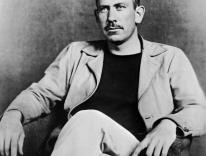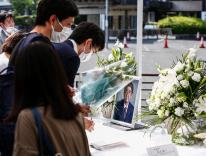BOTH SIDES?
Your editorial “The Standoff in Ukraine” (January) examines Putin’s aggression from the perspectives of various stakeholders: the Biden administration, critics of the Biden administration, Russia, Putin, Western Europe, and others. One perspective is conspicuously absent from your analysis: that of the Ukrainian people.
To be clear, a significant majority of the Ukrainian people are in favor of joining NATO, and an even larger percentage seek to join the EU and strongly oppose the creation of a federal Ukrainian state. Yet you would have the Ukrainian people accede to Putin’s demands—as a reward for his belligerence?
The desire of the Ukrainian people is simple: to live in a country with a healthy civil society that promotes the rule of law and values individual human life. It has a way to go on this path, to be sure, but a vibrant Ukrainian state that respects the individual and the rule of law scares Putin much more than NATO. And that’s why he invaded Crimea and the Donbas. Your article directs the United States to be “clear and firm to both sides of this conflict,” implying, like Trump in Charlottesville, that there is moral ambiguity here. There is not.
Taras G. Szmagala Jr.
Bentleyville, Ohio
KYIV, NOT KIEV
Thank you for highlighting the situation in Ukraine. The country is facing an existential moment as Russia surrounds it with a massive military force armed to the teeth. However, I am disappointed with your woefully inadequate understanding of what is at stake. Your position seems to imply that Ukraine, as the victim of an assault, should be required to negotiate with the aggressor—Russia! Furthermore, as if to add insult to injury, you continue to use the obsolete Russian name of Ukraine’s capital—it is Kyiv, not Kiev. Most media have already accepted Kyiv as the proper name.
Jurij Dobczansky
Silver Spring, Md.
THE ACTION IS HERE
I enjoyed reading Rita Ferrone’s article (“Where the Action Is,” January); it explains a lot for me. But I am puzzled by its omission of the ministry of Eucharistic minister. This ministry—both by aiding at the distribution of Communion and, especially, by going out to the homebound—is for me the ultimate example of the changing performance of ministry in the Church.
The article emphasizes at its conclusion that “The liturgy both draws us in and sends us out.” The Eucharistic minister to the homebound is already doing this. My wife and I have long performed this ministry as a couple. Both of us and the recipients experience so wonderfully the fulfillment of “wherever two or three are gathered in my name, I am there among them.” I wish the article had included this ministry—I would like to know more about how it developed.
Tom Eichler
Venice, Fla.
THE EDUCATION WE NEED
As a citizen and business educator, I believe that America needs to reform education to counter “neoclassical economics” and its presumptions and practices, which Anthony Annett criticizes in his article “The Fallen Idol” (January). A prerequisite for a “policy roadmap heavily influenced by the values of Catholic social teaching” and “prescriptions [that] can be embraced by Catholics and non-Catholics alike” is education, especially university education. But what kind of education is being called for?
We need education that goes beyond the wisdom of Enlightenment thinkers to classical and medieval thought to address the crisis of modern liberalism created by America’s addiction to neoliberalism, which is little more than an extension or a variation of neoclassical economics. Regardless of what it is called now—consumer, financial, or fintech capitalism—we cannot fundamentally address the ills of capitalism unless we abandon the neoclassical economic education that views human society as an organization of rational agents who act to maximize their wealth. Through education, human thinking should be oriented to the primacy of being over having.
More specifically, we should teach our students to understand that 1) things can have value, but only persons can have worth; 2) collective is a collection of things and people in a region of space; community is the existence of persons recognizing one another as persons having dignity, with emotional and ethical relationships; 3) well-being has the conception of goodness and virtue (both moral and intellectual virtue) as constituents; wealth means possession of valued things; 4) humans are beings that claim freedom and autonomy and hold responsibility for their thoughts, intentions, and actions.
But a serious question remains in my mind: Is the education just described feasible in America’s current, predominantly corporatized universities that seem to have become handmaidens of the market while preaching lofty ideals?
Yeomin Yoon
Stillman School of Business
Seton Hall University
South Orange, N.J.
COMMUNITY WITHOUT INTIMACY
In “Opening to the World” (February), an excerpt from a forthcoming memoir that I’m looking forward to reading in its entirety, Luke Timothy Johnson speaks of his “awakening desire for intimacy” in tension with his “punctilious observance” of the monastic rules.
Community without intimacy was one reason my husband gave for leaving his monastic community to marry me. He had entered monastic life weeks after graduation from college. Ten years later, when we met, I was a twenty-nine-year-old widow searching for community. Fortunately, his monastic community supported both of us as our lives “exploded,” to borrow Professor Johnson’s metaphor.
Gail Porter Mandell
Humanistic Studies Program
Saint Mary’s College
Notre Dame, Ind.
Please email comments to [email protected] and join the conversation on our Facebook page.
Previous Story
Poem | The Hermit Returns
Next Story
Remembering Paul Farmer


